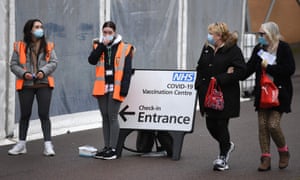Narcissists Become CEO With More Speed Than Their Peers, Despite The Harm They Can Do

(John Lamb/The Image Bank/Getty Images)
CARLY CASSELLA
7 FEBRUARY 2021
People who are fundamentally entitled, self-confident, manipulative, and callous do really well in the modern workplace.
Now, a new study in Italy suggests those who show five narcissistic personality traits climb the corporate ladder much faster than their peers.
In a survey of 172 Italian CEOs, those who scored higher in extraversion, overconfidence, self-esteem, dominance, and authoritarianism were more likely to get appointed CEO after a certain amount of time at their firm.
The relationship was found to be so sensitive that even just a slight increase in narcissism levels resulted in a 29 percent higher likelihood of becoming CEO compared to the sample's average narcissism levels.
"Our results are somewhat worrying – in fact, they imply that organizations and boards favor the emergence of narcissistic individuals to key leadership positions," psychologists Paola Rovelli and Camilla Curnis told Psypost.
"Narcissism is known to be a dark trait, and individuals who are characterized by higher levels of narcissisms are known to procure negative outcomes for the firm, such as financial crime, tax avoidance, less collaborative cultures and more."
The statistical analysis is relatively small, and the results will need to be verified in other nations. However, since most research on CEO narcissism looks at executives in the United States, the new paper is a welcome international extension.
Plenty of research has shown CEOs are disproportionately prone to narcissistic tendencies – oftentimes masking their own strong desires for power and prestige with a confident, charming exterior.
In recent years, numerous studies have been done to explore the role of CEO and this position's narcissistic tendencies. So far, the literature has tended to focus on how an individual's personality impacts the workplace based on strategy, performance, and compensation.
Some studies have shown, for instance, that narcissistic CEOs are tied to unequal compensation, lower employee satisfaction, and a lack of communication in the workplace. They also appear more willing to commit crimes for the sake of the business.
"Once they're in power, narcissists consolidate their position by firing everyone who challenges them," explained psychologist Charles O'Reilly for the Stanford University newsroom in 2020.
"In their place rise a plague of toadies, opportunists, and enablers equally guided by self-interest and short on scruples. So you end up with these individualistic cultures with no teamwork and low integrity. We've documented this in a bunch of Silicon Valley tech firms."
The psychology study in Italy is one of the first to examine whether narcissism speeds up a person's promotion to CEO. Its findings suggest youth and personality are stronger promoting forces than actual experience.
Measuring narcissism through the Narcissistic Personality Inventory, the authors have compared the scores of various Italian CEOs against their career histories.
"Our empirical analyses revealed that narcissism has a significant positive effect on how quickly individuals advance to the CEO position," the authors conclude.
The effect was found even in family businesses, with narcissism having, on average, the same effect on advancement chances as if the business were a non-family business. However, if the CEO was a part of the family that owned the business, narcissism had less of an impact on their advancement.
The new study provides a strong explanation for the prominence of narcissists in CEO positions, but it has several limitations. It assumes, for instance, that narcissistic traits are stable over time.
Clinical narcissism is thought to emerge in early childhood and remain with a person through adulthood, but there is a chance that these Italian CEOs are accruing narcissistic personality traits after they gain power in a business.
In other words, the authors write, "experiences of power might, to a certain extent, stimulate narcissism."
In the future, studies should therefore try and measure personality traits over a longer period of time to help determine when these traits appear in a person's life and career.
"Similarly, it would be important to assess the moderating effect of the economic environment, to see whether narcissistic individuals are more likely to be appointed in periods of economic boom or bust," explain Curnis and Rovelli.
"This is w[h]ere we aim to go with ou[r] future research."
The study was published in The Leadership Quarterly.





 Unloading cases of vaccines in Johannesburg last week.
Unloading cases of vaccines in Johannesburg last week.







